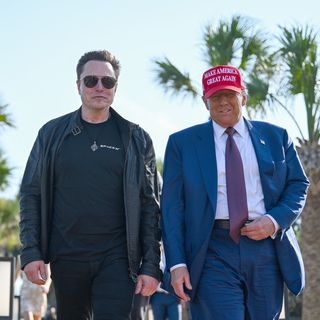The American-made M2 'Ma Deuce" machine gun is becoming Ukraine's weapon of choice for arming AI-enabled fighting robots
Courtesy of United24
- Ukraine's soldiers have been fighting Russia with M2 Browning machine guns, an iconic American weapon.
- Now, ground robot makers are adding them to their AI-enabled fighting weapons.
- One maker told BI that the gun's wide employment and reliability make it a weapon of choice.
An iconic, century-old American machine gun is being put to work on the battlefields of Ukraine, including on AI-enabled robots designed to fight Russian forces.
John Browning conceived of the .50 caliber M2 Browning machine gun in 1918 toward the end of World War I, though it didn't enter service with the US military until closer to World War II. Known as "Ma Deuce," this powerful gun is among the most famous and enduring weapons.
It's received a number of upgrades, and it is still used by US forces and other militaries. In fact, it's one of the most widely used heavy machine guns in the world today.
And now it's part of the robotic age. It's being mounted on Ukraine's advanced autonomous robots that use AI to drive to Russian positions and attack.
Battle bots with M2
Ukrainian forces are using robots equipped with machine guns, grenade launchers, and explosives to fire on the Russians and blow up beside Russian targets. Many of the Ukrainian defense firms working in this space have chosen the M2 machine gun as an armament for these robots.
Ukraine's FRDM group, for instance, is a drone and ground robot manufacture that makes its D-21-12 remotely controlled ground battle vehicle with the .50 caliber gun attached.
The robot, designed for firefights and surveillance, weighs 1,289 pounds with its ammunition included and can travel more than six miles an hour. It was approved for use by the military in April.
Ihor Kulakevych, a product manager at FRDM group, told Business Insider last month that the M2 was chosen because the heavy machine gun is readily available in many arsenals in the West. This weapon and the ammunition are easily obtained.
Mykhailo Fedorov
The same cannot be said for Ukraine's supply of Soviet-made machine guns. The stocks are running low, and they can't exactly get more, aside from capturing them in battle.
Kulakevych said his company also sees the M2 as a particularly reliable weapon.
Vadym Yunyk, the CEO of FRDM Group, told BI that the company developed its robot "in response to the urgent need to reduce risks to personnel while performing logistical tasks on the front lines." He said that it can be used for tasks including evacuating wounded soldiers and serving as "a platform for mounting weapons." He said that it has "proven its effectiveness on the battlefield."
Other robot makers are also using the M2. Ukrainian company DevDroid, for example, has developed a new combat module for its Droid TW 12.7 ground robotic complex that can carry the M2 Browning.
The vehicle was originally developed as a logistics platform, but the addition of the machine gun made it into a combat robot, the company said this month. It is on the battlefield in Ukraine, and the company said that it uses AI, describing it as having "high-precision target recognition using artificial intelligence."
The M2 is also being used in an AI-powered turret called the Sky Sentinel that Ukraine said has been able to shoot down some of Russia's large and devastating Shahed drones and can stop cruise missiles.
The Sky Sentinel system is designed to require almost no human involvement, which is important for Ukraine as it faces big manpower shortages compared to the much larger Russia. The system uses AI to find and track targets and determine firing solutions, which is valuable for the Ukrainians as they face relentless Russian air attacks while grappling with shortages of air defenses.
High- and low-tech solutions
Ukrinform/NurPhoto via Getty Images
The M2 has seen combat in a range of conflicts, from World War II to Vietnam to Iraq to Afghanistan.
In Ukraine, they are being used by real soldiers, not just robots. Ukraine's air defense soldiers are also using the M2s mounted on the back of trucks to shoot down Russian drones. (A BI reporter actually tried out a simulator for this weapon in Kyiv).
The war in Ukraine is one that features both high- and low-tech solutions, like more drones than any other conflict in history, new types of electronic warfare, and other emerging technologies alongside simple combat options, like shotguns for shooting down fiber-optic drones and hastily welded cages on tanks.
Mykhaylo Palinchak/SOPA Images/LightRocket via Getty Images
There's trench warfare like something straight out of World War I and ground robots with machine guns.
Ground robots are a technology that has been used by Western militaries before, but Ukraine is developing them at a new speed and scale, and it's getting constant feedback about how they work on an intense battlefield so makers can refine them.

